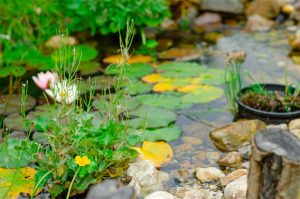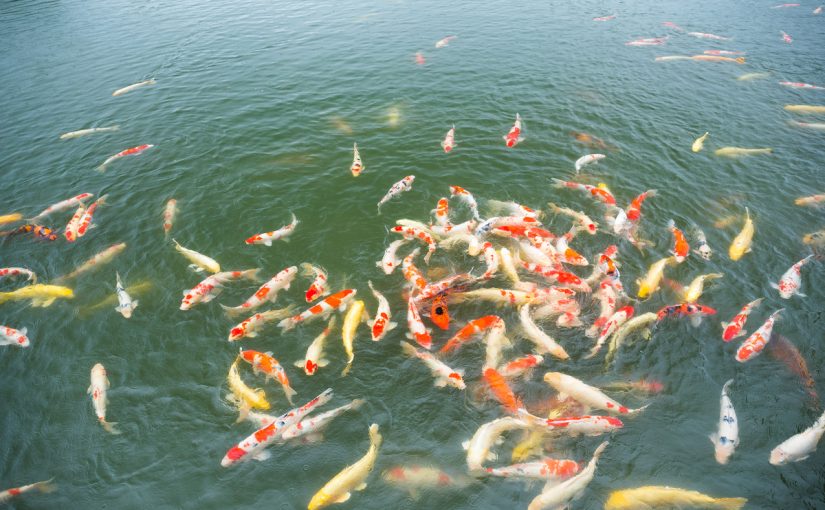A filtration system is an essential component of a koi pond. Let’s take a look at why a filter is needed, types of filters, and how to determine the best filter for your pond.
Do Koi Ponds Need Filters?
Since Koi fish spend their entire lives in a pond, it’s easy to understand why a filter is critical. While most every Koi pond features a filter, some are not sized correctly. Each and every koi pond needs to have an appropriate filter system to ensure the fish can live a comfortable and healthy life.
Types Of Filter Systems
There are several different types of mechanical filtration, with both Sieve and RDF (Rotating Drum Filter) very popular options nowadays. Any small particles will be easily captured through this system, and the result is crystal clear water. RDF is the way to go if you prefer to install an automatic system.
Another filter type that’s commonly utilized in koi ponds is the bead filter system. It looks like a pool filter, coming complete with backwash functions so you can remove any collected waste from the system without using your bare hands. These filters use small beads, with lots of surface areas for bacteria to grow on. This means the system also has some biological function.
A biological filter will use filter media materials in order to grow nitrifying bacteria. The main goal of the media is not to filter particles, but to ultimately provide enough space for the bacteria to reside in. This means it’s very important to have enough surface area to refrain from clogging.
Biological Filtration Vs Mechanical Filtration
The two main categories of filtration are biological and mechanical. Let’s take a look at the difference between these filter types.
Biological filtration requires the help of bacteria. Beneficial (nitrifying) bacteria will detoxify and purify the koi pond water.
Mechanical filtration, meanwhile, physically separates and removes all wastes or solids. The only issue with this filtration type is that toxic substances, such as ammonia, will dissolve in the water and stay there. This is why clear water isn’t always considered healthy water.
How To Size Your Koi Pond Filter
It is recommended to double the size of the filter compared to the size of your pond. For instance, if the pond is 1,000 gallons, it’s recommended to install a filter that can handle up to 2,000 gallons. The size of your filter should typically be based on the Koi fish population and how much waste is ultimately produced.
The truth is you can never oversize your filter for a koi pond. The addition of an air pump is also important. Nitrifying bacteria are aerobic bacteria, meaning it needs oxygen to thrive.
A plethora of aeration is essential for a koi pond. Even if you have a waterfall, oftentimes that is simply not enough. Consider adding an air pump when installing a filtration system.

Phoenix Area Pond Supply
If you are looking for live fish, live plants, pond filtration, pumps, or anything else you need to start or care for your water garden or garden pond The Backyard Pond has everything you need. We serve residents of the greater Phoenix area with the best selection of Koi, plants, and all the supplies you need. Stop by or give us a call at 623-878-6695 with your questions.
